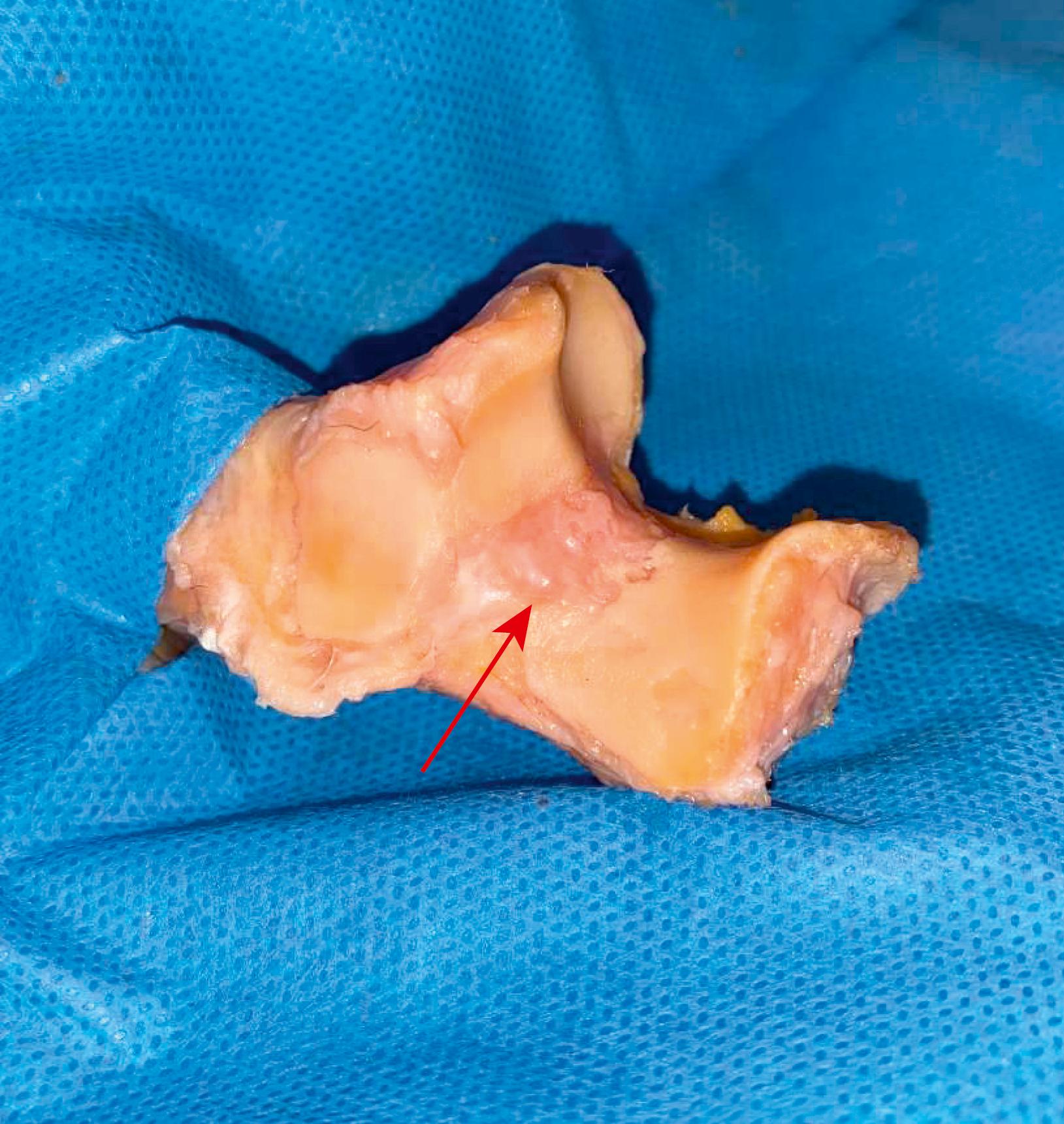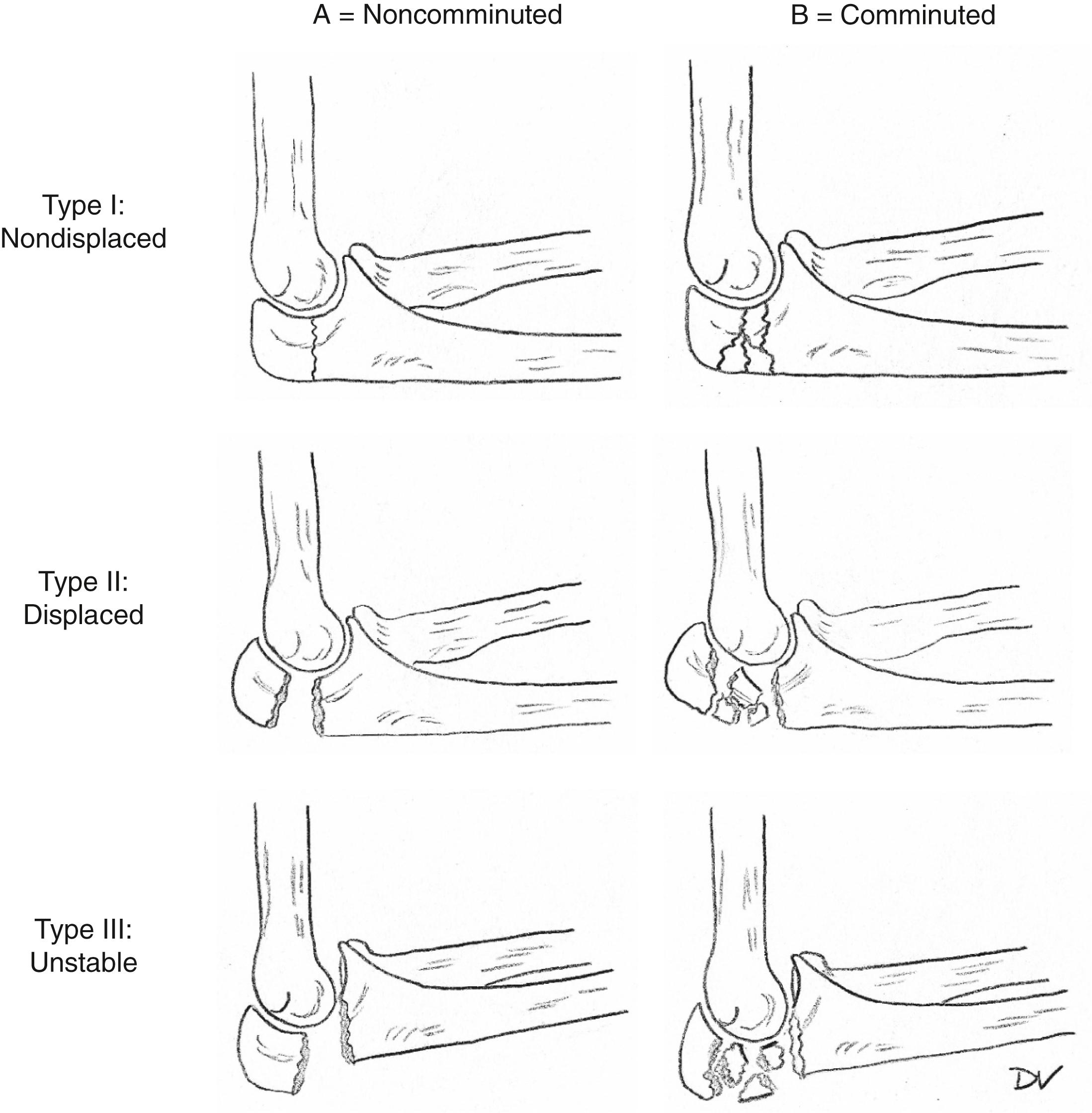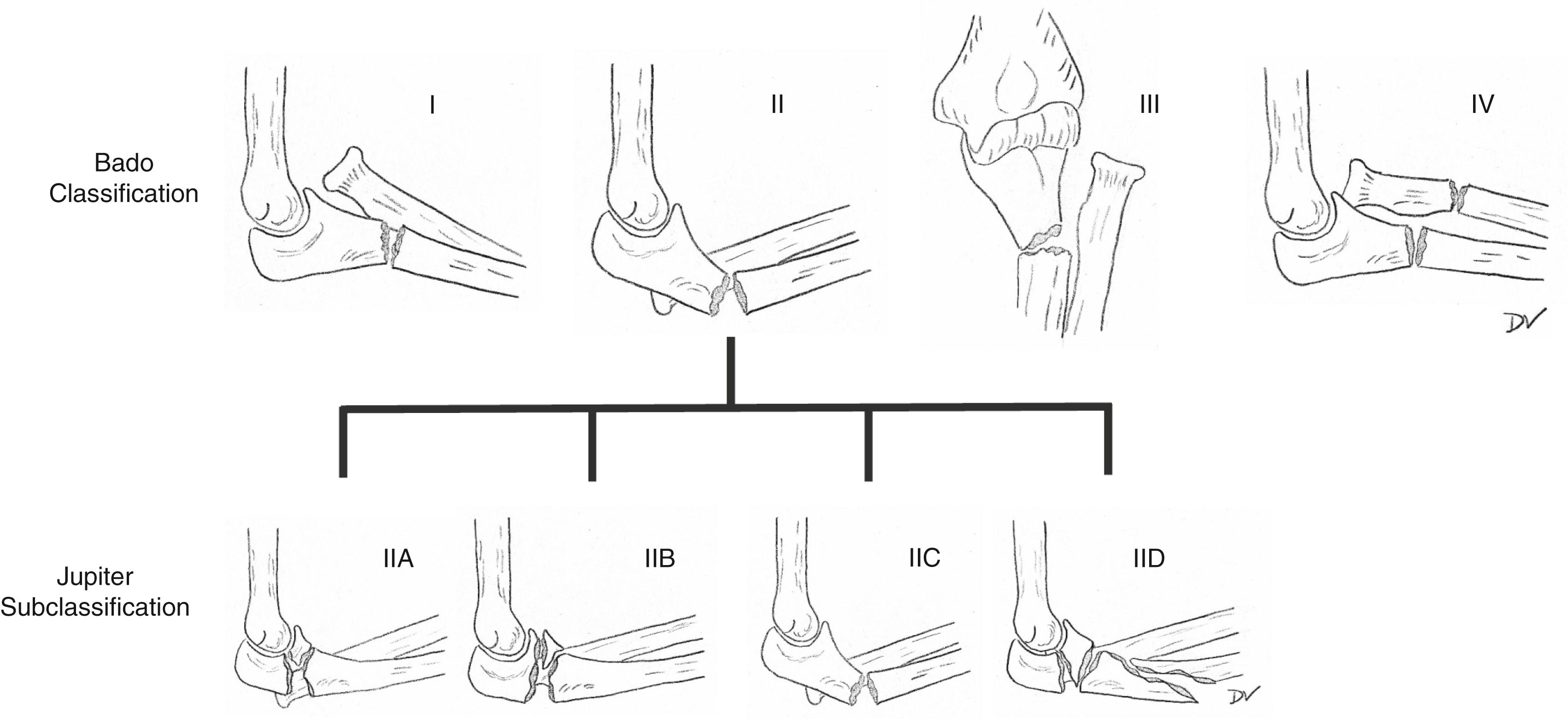Physical Address
304 North Cardinal St.
Dorchester Center, MA 02124
Proximal ulna fractures and fracture-dislocations present a unique challenge to the orthopedic surgeon. It is one of the few joints with multiple articulations and degrees of freedom. Due to these intricate relationships, the disruption of the elbow’s complex osseous and ligamentous anatomy can have profound effects on the ability to perform activities of daily living. Recognition of the patterns of injury and timely treatment are critical to getting patients back to full function as soon as possible.
The elbow provides flexion, extension, and rotation around the central axis of the forearm. The ability of the elbow joint to perform these movements is due to its unique anatomy including its three articulations: the proximal radioulnar, the radiocapitellar, and the ulnotrochlear joints. The congruity that these joints provide and the soft tissue surrounding the elbow provide its stability.
The ulnotrochlear joint is primarily stabilized by the trochlear notch of the ulna. The trochlear notch consists of a nearly 190-degree articulation from the coronoid distally to the olecranon process proximally. The trochlear notch is not hemispherical, but rather ellipsoid, which explains the articular gap in the midportion. This gap, which appears as a transverse nonarticular groove that cuts across the trochlear notch, separates the coronoid and olecranon articular areas of the notch ( Fig. 51.1 ). When reconstructing an olecranon fracture, it is important to reestablish the anatomic relationship between these two main articular regions.

The angle between the tip of the olecranon and the coronoid processes, when viewed in the sagittal plane, is approximately 30 degrees posteriorly tilted in respect to the long axis of the ulna. This angle corresponds to the 30 degrees of anterior angulation of the articular condyles of the distal humerus. This synergistic anatomy provides the stability of the elbow joint and allows the elbow to obtain full extension.
The olecranon process is the most posterior aspect of the trochlear notch and the location of the triceps insertion. At full extension of the elbow, the olecranon tip rests in the olecranon fossa of the distal humerus. There are three distinct insertional areas of the triceps on the olecranon corresponding to the posterior capsular insertion, the deep muscular portion, and the superficial tendinous portion of the triceps. The triceps insertion is 2.6-cm wide and attaches approximately 1 cm from the tip of the olecranon.
The coronoid process consists of the coronoid tip, base, lesser sigmoid notch, and the anteromedial facet. The anteromedial facet, in particular, is essential for elbow stability under posterior and varus stress. Understanding the soft tissue attachments to the coronoid area is critical to understanding the stability of the elbow joint. The anterior band of the medial collateral ligament attaches to the base of the coronoid at the sublime tubercle and provides stability in valgus stress while remaining isometric during elbow range of motion (ROM). On the lateral side of the elbow, the lateral ulnar collateral ligament (LUCL) attaches to the tubercle of the supinator crest of the ulna and is the primary stabilizer to varus and external rotation stress of the elbow. The anterior capsule inserts on average 6 mm distal to the coronoid tip and injury to the capsule should be suspected in any coronoid tip fracture.
A firm understanding of the pathoanatomy of the elbow allows the surgeon to anticipate and identify associated injuries after an injury, which is essential to timely and appropriate treatment.
When a proximal ulna fracture is first identified, it is important to recognize whether there is a dislocation component in relation to the ulnohumeral or proximal radioulnar articulations. A fracture of the proximal ulna and a disruption of the proximal radioulnar joint is known as a Monteggia fracture. Initially described by Giovanni Battista Monteggia in 1814, it was further expanded upon by Jose Luis Bado in 1958. Today, we reserve the label of a Monteggia to apply to a dislocation of the proximal radioulnar joint in association with a fracture of the ulna. Monteggia fractures should be distinguished from transolecranon fracture-dislocations. In Monteggia fractures, the fracture of the ulna is generally distal to the coronoid and there is a dislocation of the radiocapitellar and proximal radioulnar joints. In a transolecranon fracture-dislocation, the fracture is in the region of the coronoid and there is radiocapitellar joint dislocation with preserved radioulnar articulation. ,
Monteggia fractures and transolecranon fracture-dislocations of the elbow are often associated with injuries including radial head fractures, capitellum fractures, coronoid fractures, and injuries to the lateral ligamentous complex of the elbow, particularly the LUCL. A surgical plan should be developed to address the other concomitant injuries. While Monteggia fractures are less common in adults than in children, all patients with a proximal ulna fracture should be evaluated for these associated injuries and treated accordingly. Standard radiographic analysis should include anteroposterior (AP), lateral, and radial head views. Traction radiographs obtained at the time of reduction can be very useful in identifying the fracture patterns. Ancillary studies such as a computed tomography (CT) scan or magnetic resonance imaging (MRI) should be obtained after fracture or joint reduction.
The purpose of a classification system is to aid the surgeon in understanding the prognosis of an injury and help guide in deciding the appropriate treatment. An understanding of the classification systems below is essential in maximizing the outcomes in patients with proximal ulna and Monteggia fractures.
The treatment-driven classification system used for olecranon fractures is the Mayo classification system. The Mayo classification system describes proximal ulna fractures on the basis of displacement, then stability, and comminution. There are three fracture types and each type is then subdivided into comminuted (A) or noncomminuted (B) fractures ( Fig. 51.2 ). Type I proximal ulna fractures are nondisplaced. These fractures are the least common type of olecranon fracture, occurring only 5% of the time. Whether these fractures are comminuted or not, these fractures are typically treated nonoperatively. Type II fractures are displaced but stable. Eighty to eighty-five percent of all olecranon fractures are Mayo Type II. , The collateral ligament and fracture fragments are intact in Type II fractures and, therefore, the elbow is typically stable. Type III fractures are displaced and unstable. These fractures are the most unstable of the olecranon fracture types and represent transolecranon fracture-dislocations.

While not a formal classification system, we have developed a treatment algorithm based on the fracture patterns and extensions. Fractures of the olecranon process (A type) are mainly due to an avulsion mechanism and are proximal to the nonarticular portion of the proximal ulna. The elbow articulations are stable in these situations. Overcoming the proximal pull of the triceps is important in planning fracture reconstruction. Fractures involving the coronoid region (B type) are often a result of higher energy mechanisms and result in more instability patterns. As the fractures extend and displace the ligament insertion areas, the ulnohumeral and proximal radioulnar joints are rendered unstable. Fracture fixation of the critical coronoid ligament insertion fragments is essential. Because these are also articular injuries around the nonarticular (bare area) of the proximal ulna, it is also important to concentrate on the fixation of the olecranon process into the coronoid. Fractures more distal to the coronoid (C type) are largely nonarticular or minimally articular. These fractures are more similar to forearm shaft fractures sharing similar fixation principles and are more likely to result in radial head instability. Proximal ulna fractures can certainly involve multiple zones. The surgeon should be prepared to gain stability across the different regions. Fracture plating systems have been designed to best capture and gain stability in each of these different zones.
The Bado description of Monteggia fractures is most commonly used ( Fig. 51.3 , Table 51.1 ). It involves four types based on the direction of the dislocation of the radial head and the apex of the ulnar fracture, which are always in the same direction. Type I fractures are dislocated anteriorly, Type II fractures are displaced posteriorly, Type III fractures are displaced laterally, and Type IV fractures can be displaced in any direction but are characterized by a diaphyseal fracture of the radius.

| Description | Incidence | |
|---|---|---|
|
Anterior dislocation of radial head and apex anterior ulna fracture | 55%–80% |
|
Posterior dislocation of radial head and apex anterior ulna fracture | 10%–15% |
|
Type II with fracture involving the olecranon and coronoid processes | |
|
Type II with fracture just distal to the trochlear notch | |
|
Type II with fracture in the ulna diaphysis | |
|
Type II with comminuted fracture in multiple locations | |
|
Lateral dislocation of radial head and apex anterior ulna fracture | 7%–20% |
|
Involve diaphyseal fracture of radius | <5% |
Type I fractures are the most common among all patients (55%–80%) but occur more commonly in children. , These injuries typically occur following a direct blow to the ulna or a hyperextension injury during a fall on an outstretched hand. Type II fractures are less common. They occur in 10%–15% of patients and are more likely to be in adults (particularly osteoporotic adults) rather than in children. These fractures were further subclassified by Jupiter and colleagues to highlight the spectrum of injury within this subgroup. It is subdivided based on the location of the ulna fracture relative to the coronoid. Type IIA fractures involve the coronoid, Type IIB are distal to the coronoid, Type IIC represent a diaphyseal fracture, and Type IID include comminuted fractures extending from the proximal portion of the ulna, including the coronoid, to the proximal half of the ulna. Type III fractures occur primarily in children and represent 7%–20% of Monteggia fractures. Type IV are the least common (<5%) and the least well-understood Monteggia fractures. These injuries could be due to an injury to a pronated forearm.
Become a Clinical Tree membership for Full access and enjoy Unlimited articles
If you are a member. Log in here